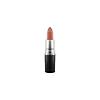What's inside
What's inside
 Key Ingredients
Key Ingredients

 Benefits
Benefits

 Concerns
Concerns

 Ingredients Side-by-side
Ingredients Side-by-side

Octyldodecanol
EmollientRicinus Communis Seed Oil
MaskingSilica
AbrasiveTricaprylyl Citrate
EmollientOzokerite
Emulsion StabilisingIsononyl Isononanoate
EmollientParaffin
PerfumingPhenyl Trimethicone
Skin ConditioningMicrocrystalline Wax
Emulsion StabilisingEthylhexyl Palmitate
EmollientCaprylic/Capric Triglyceride
MaskingCopernicia Cerifera Wax
Ascorbyl Palmitate
AntioxidantTocopherol
AntioxidantStearyl Stearoyl Stearate
EmollientVanillin
MaskingBHT
AntioxidantMica
Cosmetic ColorantCI 77891
Cosmetic ColorantCI 77491
Cosmetic ColorantCI 77492
Cosmetic ColorantCI 77499
Cosmetic ColorantCI 42090
Cosmetic ColorantCI 75470
Cosmetic ColorantCI 15850
Cosmetic ColorantCI 45380
Cosmetic ColorantCI 45410
Cosmetic ColorantCI 73360
Cosmetic ColorantCI 17200
Cosmetic ColorantCI 19140
Cosmetic ColorantCI 15985
Cosmetic ColorantOctyldodecanol, Ricinus Communis Seed Oil, Silica, Tricaprylyl Citrate, Ozokerite, Isononyl Isononanoate, Paraffin, Phenyl Trimethicone, Microcrystalline Wax, Ethylhexyl Palmitate, Caprylic/Capric Triglyceride, Copernicia Cerifera Wax, Ascorbyl Palmitate, Tocopherol, Stearyl Stearoyl Stearate, Vanillin, BHT, Mica, CI 77891, CI 77491, CI 77492, CI 77499, CI 42090, CI 75470, CI 15850, CI 45380, CI 45410, CI 73360, CI 17200, CI 19140, CI 15985
Hydrogenated Polyisobutene
EmollientDimethicone
EmollientCetearyl Ethylhexanoate
EmollientMicrocrystalline Wax
Emulsion StabilisingCaprylic/Capric Triglyceride
MaskingPolyethylene
AbrasiveSilica
AbrasiveTrimethylolpropane Triisostearate
EmollientDimethicone/Vinyl Dimethicone Crosspolymer
Skin ConditioningKaolin
AbrasiveSynthetic Wax
AbrasiveBis-Diglyceryl Polyacyladipate-2
EmollientMica
Cosmetic ColorantCopernicia Cerifera Cera
EmollientStearalkonium Hectorite
Gel FormingPolyhydroxystearic Acid
EmulsifyingPentaerythrityl Tetra-Di-T-Butyl Hydroxyhydrocinnamate
AntioxidantPropylene Carbonate
SolventRosa Canina Fruit Oil
EmollientPassiflora Edulis Seed Acid
BleachingTocopherol
AntioxidantHydrogenated Polyisobutene, Dimethicone, Cetearyl Ethylhexanoate, Microcrystalline Wax, Caprylic/Capric Triglyceride, Polyethylene, Silica, Trimethylolpropane Triisostearate, Dimethicone/Vinyl Dimethicone Crosspolymer, Kaolin, Synthetic Wax, Bis-Diglyceryl Polyacyladipate-2, Mica, Copernicia Cerifera Cera, Stearalkonium Hectorite, Polyhydroxystearic Acid, Pentaerythrityl Tetra-Di-T-Butyl Hydroxyhydrocinnamate, Propylene Carbonate, Rosa Canina Fruit Oil, Passiflora Edulis Seed Acid, Tocopherol
 Reviews
Reviews

Ingredients Explained
These ingredients are found in both products.
Ingredients higher up in an ingredient list are typically present in a larger amount.
This ingredient is an emollient, solvent, and texture enhancer. It is considered a skin-softener by helping the skin prevent moisture loss.
It helps thicken a product's formula and makes it easier to spread by dissolving clumping compounds.
Caprylic Triglyceride is made by combining glycerin with coconut oil, forming a clear liquid.
While there is an assumption Caprylic Triglyceride can clog pores due to it being derived from coconut oil, there is no research supporting this.
Learn more about Caprylic/Capric TriglycerideMica is a naturally occurring mineral used to add shimmer and color in cosmetics. It can also help improve the texture of a product or give it an opaque, white/silver color.
Serecite is the name for very fine but ragged grains of mica.
This ingredient is often coated with metal oxides like titanium dioxide. Trace amounts of heavy metals may be found in mica, but these metals are not harmful in our personal products.
Mica has been used since prehistoric times throughout the world. Ancient Egyptian, Indian, Greek, Roman, Aztec, and Chinese civilizations have used mica.
Learn more about MicaMicrocrystalline Wax is created by de-oiling petroleum. It is highly refined and purified before being added to cosmetics.
Microcrystalline Wax is used to enhance the texture and create even consistency. It helps stabilize a product by preventing ingredients from separating.
Silica, also known as silicon dioxide, is a naturally occurring mineral. It is used as a fine, spherical, and porous powder in cosmetics.
Though it has exfoliant properties, the function of silica varies depending on the product.
The unique structure of silica enhances the spreadability and adds smoothness, making it a great texture enhancer.
It is also used as an active carrier, emulsifier, and mattifier due to its ability to absorb excess oil.
In some products, tiny microneedles called spicules are made from silica or hydrolyzed sponge. When you rub them in, they lightly polish away dead skin layers and enhance the penetration of active ingredients.
Learn more about SilicaTocopherol (also known as Vitamin E) is a common antioxidant used to help protect the skin from free-radicals and strengthen the skin barrier. It's also fat soluble - this means our skin is great at absorbing it.
Vitamin E also helps keep your natural skin lipids healthy. Your lipid skin barrier naturally consists of lipids, ceramides, and fatty acids. Vitamin E offers extra protection for your skin’s lipid barrier, keeping your skin healthy and nourished.
Another benefit is a bit of UV protection. Vitamin E helps reduce the damage caused by UVB rays. (It should not replace your sunscreen). Combining it with Vitamin C can decrease sunburned cells and hyperpigmentation after UV exposure.
You might have noticed Vitamin E + C often paired together. This is because it is great at stabilizing Vitamin C. Using the two together helps increase the effectiveness of both ingredients.
There are often claims that Vitamin E can reduce/prevent scarring, but these claims haven't been confirmed by scientific research.
Learn more about Tocopherol